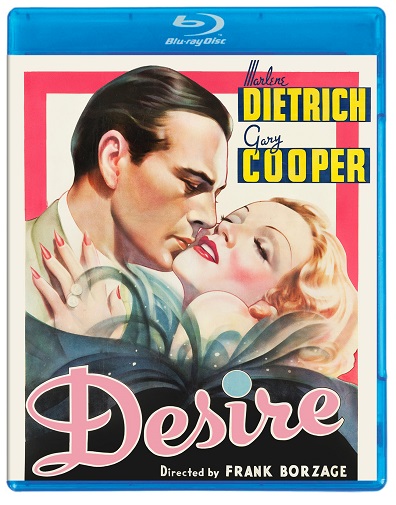
Desire
Studio: Kino Lorber Studio Classics
Oct 04, 2021
Web Exclusive
![]()
Although it’s still true to some degree today, the Golden Age of Hollywood was fueled by star power: larger-than-life actors and actresses who could compel and draw audiences by virtue of their charisma and by blurring the lines between their characters and real-life personas. Marlene Dietrich was an archetypal example of this kind of star; playing aloof, exotic beauties while also cultivating that image in reality. The same goes for Gary Cooper, who rose to fame playing stalwart, competent, all-American heroes. The two performers starred opposite each other as just those kinds of archetypes in Josef von Sternberg’s 1930 melodrama Morocco. But it’s surprisingly effective when stars of their caliber are able to tweak their established personas just enough to make a joke of them—which is precisely what Dietrich and Cooper did in Frank Borzage’s 1936 crime comedy, Desire.
The delightfully farcical plot casts Dietrich as an upscale conwoman who, in the opening scenes, swindles a Parisian jeweler out of a $2.2 million diamond necklace. While fleeing to Spain, she runs afoul of a vacationing American auto executive who she begins to romance, initially as a cover story but eventually out of real feeling. Desire was produced by both Borzage and Ernst Lubitsch, the latter giving the otherwise screwball set-up a bit of the “Lubitsch touch,” both indulging in and mocking the trappings of early 20th century aristocracy and wealth. As Madeline, Dietrich is still every inch the regal seductress she was in her more traditional films, but Borzage and the script continually keep her on her back foot, mostly due to Cooper’s Tom Bradley, an overconfident dunce who reads as an early riff on stereotypes of clueless American tourists. The reversals and twists are delightfully frequent and mostly rely on the fact that in the 1930s, if you dressed and spoke well enough, people would just believe you when you pretended to be another person. Also of note is costume designer Travis Banton, who regularly worked with Dietrich during the peak of her career. She has an elaborate new hat in virtually every scene and it’s pretty terrific.
Current Issue

Issue #72
Apr 19, 2024 Issue #72 - The ‘90s Issue with The Cardigans and Thurston Moore
Most Recent
- Crumb Share Video for New Song “The Bug” and Announce New Tour Dates (News) — Crumb
- Sam Evian on “Plunge” (Interview) — Sam Evian
- Maya Hawke Shares Lyric Video for New Song “Hang in There” (News) — Maya Hawke
- Premiere: Anna Tivel Shares New Single “Desperation” (News) — Anna Tivel
- Nilüfer Yanya is a Runaway Bride in the Video for New Song “Like I Say (I runaway)” (News) — Nilüfer Yanya

Comments
Submit your comment
There are no comments for this entry yet.